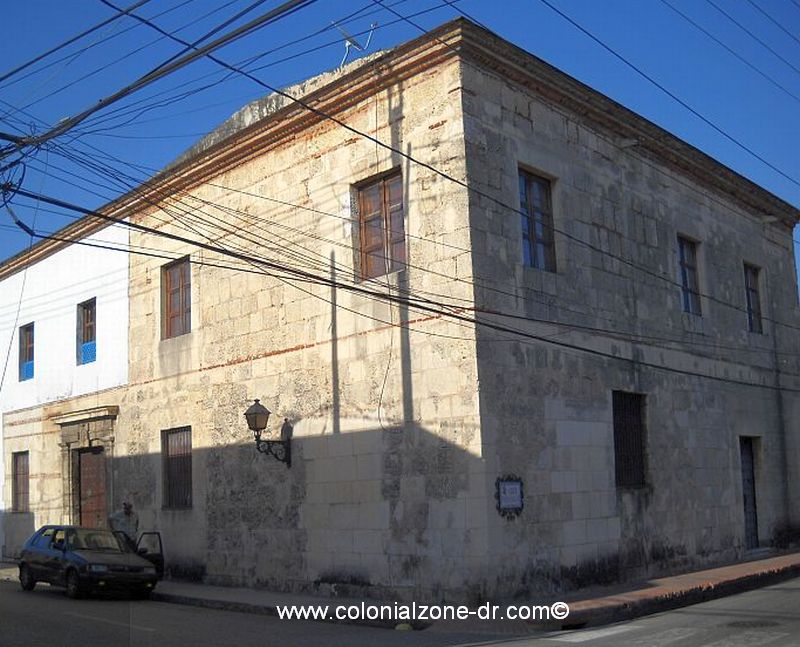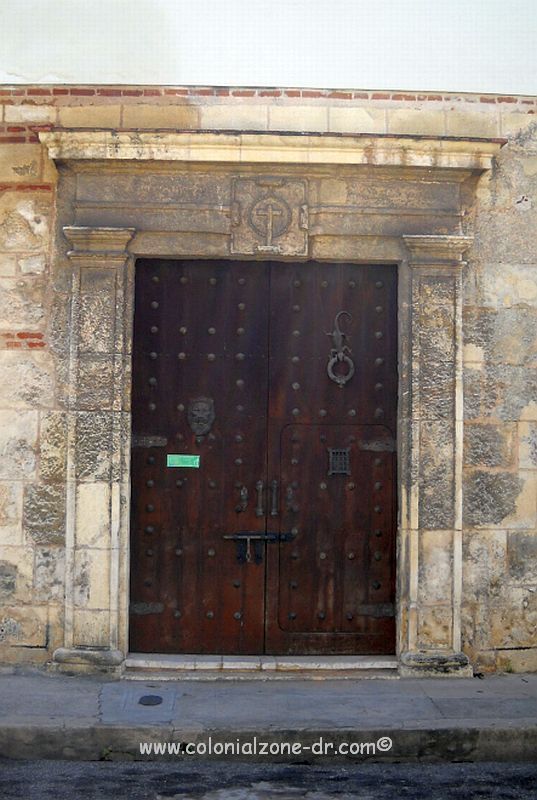Colegio de Gorjón, home of Centro Cultural de España
Colegio de Gorjón/ College or School of Gorjón was a vision of rich landowner and sugar tycoon Hernando de Gorjón. The building was later restored and now is the home of Centro Cultural de España/ Cultural Center of Spain.

Hernando de Gorjón
Hernando de Gorjón came to the island in 1502 on the same expedition that brought Fray Governor Nicholas de Ovando and the Licenciado/ Lawyer Bartolomé de las Casas. Since he did not have any heirs Gorjón decided to build a college for the study of sciences. Sadly, he never got to see his dream completed. The building was finished in 1550, after his death.
University of Santiago De La Paz
In 1583 it was named part of the University of Santiago De La Paz. The university was finally confirmed by Cédula Real in 1741 when Fernando VI gave it recognition as the Universidad de Santo Domingo.

Centro Cultural de España/ Cultural Center of Spain
The Colegio de Gorjón was restored beautifully in the 1970’s by the Comisión de Monumentos de Santo Domingo/ Monument Commission. At this time it was decided to make the building return to its original use and become a center for learning and culture. In 1990 the location was the Centro Cultural Hispánico. Since 1998 to present day The Colegio de Gorjón is the home of the Centro Cultural de España/ Cultural Center of Spain (CCEDS http://www.ccesd.org). It is an institution integrated into the worldwide network of cultural centers of the Spanish Agency of Cooperation the International, AECI.
Architect
Many architectural interests of great historic value can be seen throughout the Colegio de Gorjón starting with the main entrance and windows.
The outside of the building can be very deceiving as it looks so plain and simple. Once you enter the front doors the interior is quite large.
Entering the building there is a stone vestibule that represents the Elizabethan period in the New World. It is decorated with several restored shields of arms that were destroyed during the Haitian invasion.

The main room was originally a chapel. Today it is the exhibition hall named in honor of painter and sculptor Antonio Prats Ventós. The Spanish patio is now the place where many outdoor concerts and exhibitions are held. The patio is surrounded by splendid columns and holds about 200 people.
Many of the old classrooms from the original school are now exhibition halls including Sala Maria Ugarte and the Sala Fotográfica. On the second floor is a library, smaller rooms and offices.
Location:
Calle Arz. Meriño between Calle Jose Gabriel Garcia and Arz. Portes.










